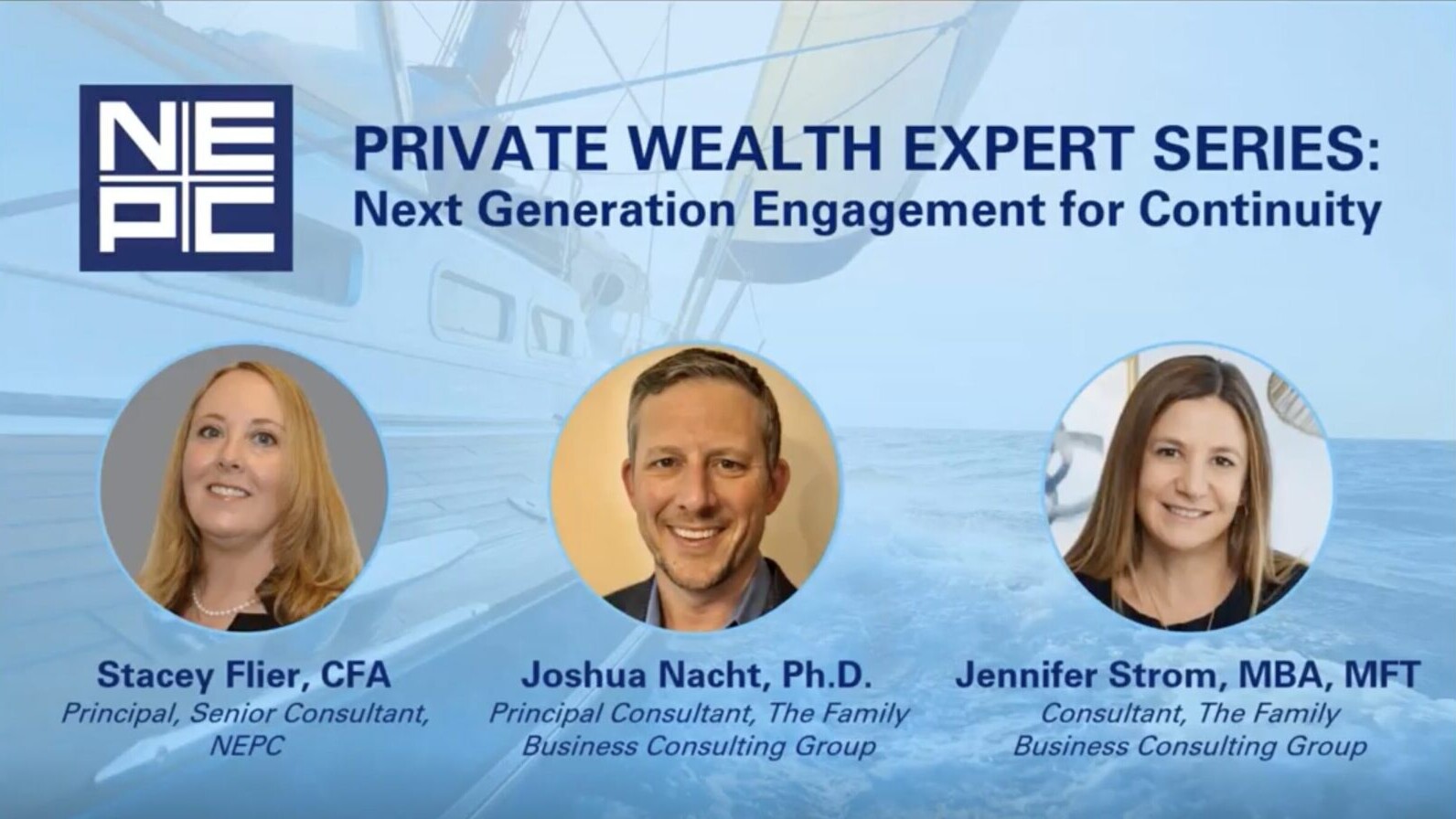At NEPC, we find ourselves in the midst of a donor evolution: Donors are not only becoming more active, but also their base is broadening with increasing involvement. There is also a growing focus on diversity, equity and inclusion (DEI). At the same time, there is an emphasis on impact investing to help achieve a societal contribution in addition to a financial return. This growing movement places our community foundation partners squarely on the front line, with the opportunity—and imperative—to bring constructive change to their local communities.
To that end, we frequently have conversations with our clients on how to transform impact goals into implementable investment programs whose efficacy can be measured. Here’s a glimpse into our process.
The Tools of Impact
Merging money and mission is an NEPC commitment. It is also a learning process which has evolved over time to match the changing needs of clients and the interests of donors. One aspect of our commitment is to develop different ways to integrate impact investing into client portfolios, for instance, by incorporating environmental, social and governance (ESG) factors into the investment process. In recent years we have felt the need to go even further to respond to the requirements of community foundations. As a result, we have developed two initiatives that broaden our focus on DEI and ESG concerns.
1. NEPC’s Diverse Manager Policy
The Diverse Manager Policy spells out our commitment to identifying more diverse-led firms to manage client assets. The policy is an extension of a long-time practice at NEPC; for more than three decades, we have focused on bringing our clients compelling strategies managed by diverse organizations.
Overall, we define a diverse-owned firm as being more than 50% owned by minorities and/or other underrepresented groups such as females, disabled persons and veterans. We also engage with diverse-led companies that are 33% owned by minorities and/or underrepresented groups. We network extensively with these firms to find strong alignment between client needs and manager strategies.
To date, we have placed more than $34.7 billion of client assets across 175 diverse manager investment strategies, and over 40% of our clients are currently utilizing diverse managers.
2. NEPC’s ESG Rating Process
A growing body of research has demonstrated that companies with strong environmental, social and governance practices have comparatively strong performance records. Investor focus on ESG practices has only accelerated since the start of 2020.
The question is, what constitutes strong ESG practices? And how do managers incorporate this evaluation into their portfolios? To answer this question for our clients, we’ve developed an ESG rating process to evaluate investment managers under consideration.
The process starts by looking at the firm’s overall commitment to ESG investment concepts – its policies, resources and structures – while also determining the degree to which the firm engages invested companies on ESG issues. We also examine ESG integration at the strategy level to find out how decisions are made and what data or tools are involved. In this way, we can develop a deeper understanding of how ESG is viewed by each manager and connect the right resource with the specific goals of each client.
Helping Others and Self Care
These programs provide valuable intelligence to our clients who want to understand the roles that DEI and ESG can play in their portfolios. That said, we want to ensure these are implemented in a way that enhances and safeguards the long-term sustainability of your foundation. Part of NEPC’s role is to help our clients sidestep risks while they pursue their vision.
There are two risks in particular that we highlight to our community foundation clients:
1) Long-term returns versus short-term liquidity
Most community foundations distribute between 4% and 5.5% of their asset value per year, which implies the need for a nominal rate of return between 6% and 7.5%. These are relatively high return targets compared with prospective capital markets expectations for the next 10 years. As a result, many foundations are drawn toward higher-return investment opportunities, such as private equity. That’s particularly true for foundations with DEI or ESG goals, because private investments may provide an opportunity to directly support a firm aligned with the foundation’s mission.
For the average community foundation, however, private investments can be tricky. Such investments are typically costly and risky, with not insignificant administrative burdens. Also, more importantly, they are illiquid, often requiring a holding period of 10 years or more; that’s a long time for a community foundation to not have access to its cash. Additionally, a well-diversified private capital portfolio will include investments in multiple funds over a number of vintage years. This is an approach that works for larger-sized foundations with extensive resources at their disposal, but it’s a challenge for community foundations that usually have a limited staff already stretched thin.
That’s not to say that private equity should be excluded in a community foundation’s portfolio. At NEPC, we recommend a thoughtful and deliberate approach to implementing such an allocation, be it through the use of advisory or discretionary OCIO services. In our experience, many organizations can invest up to 20% of their assets in privates and still be cash-flow positive. Our proprietary total enterprise management (TEM) tool can help you balance long-term investment growth with short-term operational needs, so your organization can plan for unexpected market events and unanticipated cash needs.
2) Leadership priorities: reporting wins versus making changes
When donor interests evolve, they can often affect a foundation’s plans. While responsiveness is no doubt a virtue, it can be expensive and risky to frequently change long-term investment programs.
Enter: NEPC. A valuable role we play for our partners is as the “keeper of the plan” – finding ways to respond to evolving needs, while ensuring stability and limiting high-cost or high-risk changes. We also advise on how a given change might impact the returns and liquidity your organization counts on.
It’s our experience that consistent reporting and quality data make it far easier for foundation leaders to communicate constructively with donors and keep them on board for the long term, so the organization remains on a steady course over time. To that end, we’ll help you codify your investment program, including your decisions about the return/liquidity tradeoffs. And we can help you build an organizational dashboard that allows you to communicate strategy and report progress – not just on your financial goals, but also your DEI and ESG goals.
Bring it Up
At NEPC, we are proud to be a part of the process pushing for positive change. We are optimistic on the ability of DEI and ESG strategies to achieve the “double bottom line” – driving both financial and social gains in the future. Our Diverse Manager Policy and ESG rating framework are tools to help you take advantage of that opportunity, and we remain committed to continually learning, advancing and refining these.
As always, we will continue to provide disciplined, diversified and balanced strategies to help community foundations make sustainable decisions about their assets and the populations they serve. Reach out to one of our consultants today to learn more about the NEPC difference.



